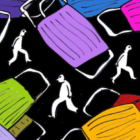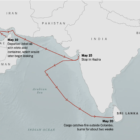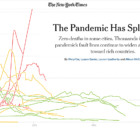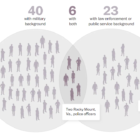In the wake of the terrorist attacks on September 11, 2001, the United States invaded Afghanistan to overthrow the Taliban. As the US prepares to withdraw its troops later this year, our NodeXL #ddj mapping found an interactive project by Al Jazeera showcasing the impact of a conflict that has directly claimed the lives of an estimated 241,000 people. In this edition, we also feature a story about the difficulties some Russian students have getting to school by IStories, an investigation into deaths related to gold mining holes by InfoCongo, and a visual vocabulary for data projects by the Financial Times.









